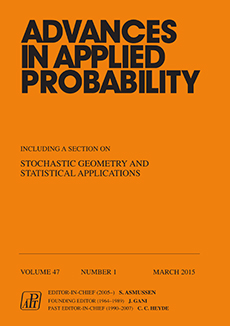Abstract
Motivated by the analysis of social networks, we study a model of random networks that has both a given degree distribution and a tunable clustering coefficient. We consider two types of growth process on these graphs that model the spread of new ideas, technologies, viruses, or worms: the diffusion model and the symmetric threshold model. For both models, we characterize conditions under which global cascades are possible and compute their size explicitly, as a function of the degree distribution and the clustering coefficient. Our results are applied to regular or power-law graphs with exponential cutoff and shed new light on the impact of clustering.
Citation
Emilie Coupechoux. Marc Lelarge. "How clustering affects epidemics in random networks." Adv. in Appl. Probab. 46 (4) 985 - 1008, December 2014. https://doi.org/10.1239/aap/1418396240
Information





